10 Virtual Reality Products At CES 2017 That Brought Us To Another World
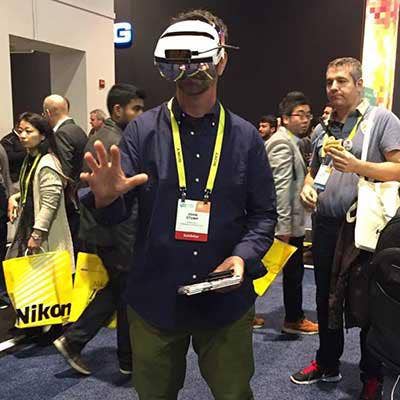
A Whole New (Virtual) World
Companies used CES 2017 as a platform to launch their newest virtual reality products.
Virtual reality has always appealed to enthusiasts who want to use the technology for a more immersive, visually stimulating gaming experience – and companies are taking that application to the next level, showing off products that enable users to pick up objects in the virtual world and even recognize other VR headsets in the real world.
But beyond gaming, some products at this year's CES had new functions, including informational headsets for manufacturing and augmented applications for retail stores.
Here are the 10 coolest virtual and augmented reality products at this year's Consumer Electronics Show.
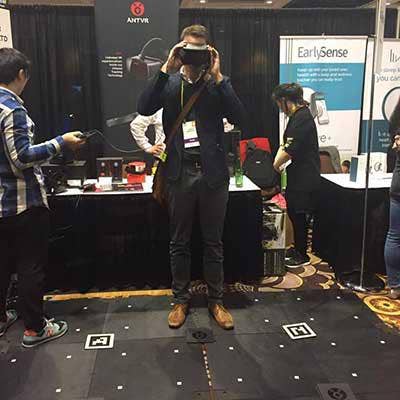
ANTVR All-In-One Universal Virtual Reality Kit
ANTVR showed off its all-in-one "universal" virtual reality kit at CES. This kit is made up of the Chinese company's virtual reality headset, a video driver box, remote controller and lithium battery. ANTVR develops virtual and augmented reality products that work with PCs, smartphones and VR cameras.
The company's headset is compatible with a variety of brands, including Lenovo and HiSense. For instance, users can wear the headset with their Lenovo VIibe K4 Note to view a large-screen cinematic experience. ANTVR's headset kit is currently available as a stand-alone purchase starting at $20 on the company's website.
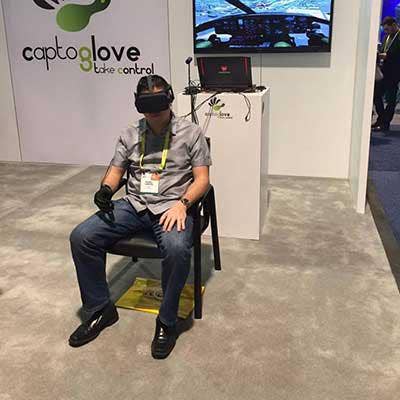
CaptoGlove
CaptoGlove, Shalimar, Fla., has made virtual reality even more immersive with its new virtual reality gaming motion controller.
This wireless product can transform a user's hand movement into digital inputs through an intuitive graphical user interface. CaptoGlove's coolest feature is that it doesn't need any companion infrastructure, such as external cameras or PCs. At CES, consumers had the opportunity to wear the glove to control a flight in virtual reality, using digital combat simulator DCS World Mirage2000.
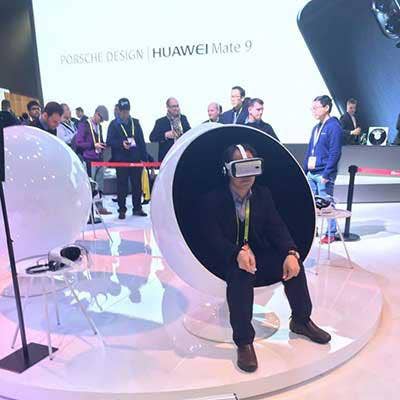
Huawei Daydream View
Google's second Daydream View headset, which is the company's virtual reality platform, was unveiled at CES. This headset, manufactured by China-based Huawei, has an adjustable focus so it can be used without eyeglasses, comes with a remote control, and provides a 95-degree field of view.
According to Google, Huawei has been readying the Daydream-ready headset "for launch at a later date."
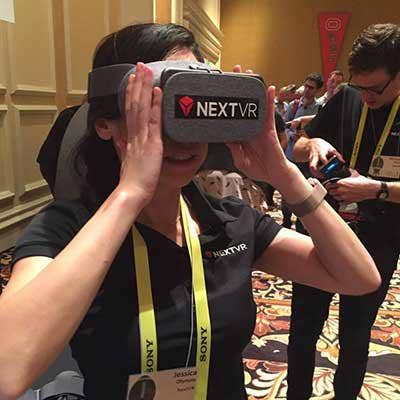
NextVR
With NextVR's technology, consumers can step right into a live NBA game – in virtual reality. NextVR, a Laguna Beach, Calif.-based startup focusing on live sports and entertainment, has expanded to Google's new VR platform, dubbed Daydream, and supported by select Android phones. This means that Android users can watch sports games live in VR right on their phones. NextVR, which touts a multiyear partnership with the NBA to broadcast one live NBA game weekly, also supports Samsung Gear VR headsets.
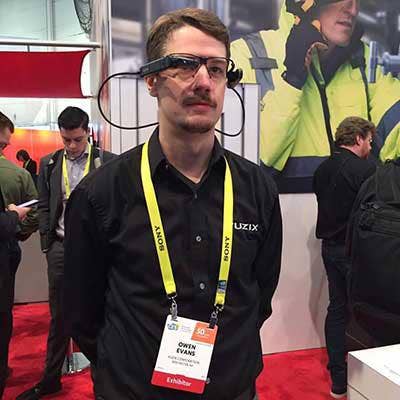
Vuzix M3000 Smart Glasses
Augmented reality startup Vuzix wants to boost the idea of display technology on glasses with its M3000 model.
These smart glasses feature advanced waveguide optics, giving users hands-free mobile computing capabilities. The Android-based M3000 is ergonomically designed and rugged, and includes an Intel Atom processor, built-in memory and camera recording features.
Unlike Google Glass, however, the M3000 is not for consumers, but for commercial, professional and pro-sumer users. Employees in the industrial, medical and manufacturing markets can use the smart glasses to check information, collect data and improve existing workflows. The Henrietta, N.Y.-based company's M3000 smart glasses will hit the market in summer 2017.
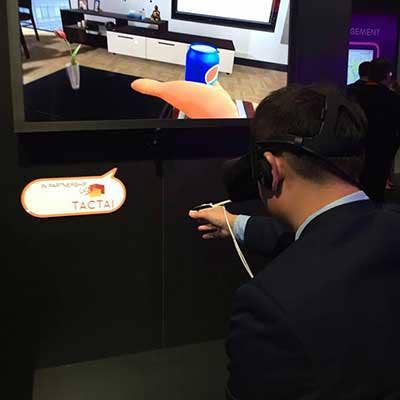
Tactai Dynamic Tactile Wave
Startup Tactai showed off its virtual reality technology at CES at its first client's booth – Ericsson.
Waltham, Mass.-based Tactai developed Dynamic Tactile Wave technology, which allows users to touch, interact and ultimately feel virtual objects using a wearable on their fingertip.
Tactai hopes that this technology will enable content creators and advertisers to incorporate interactive elements for product information, or deliver contextual information through embedded virtual reality content. The Dynamic Tactile Wave technology is currently being developed and is still patent pending.
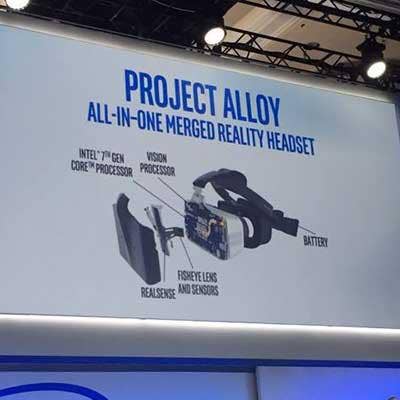
Project Alloy
Intel, Santa Clara, Calif., demonstrated Project Alloy, its wireless virtual reality headset that leverages its RealSense 3-D camera technology, which will be part of Windows Holographic, so Windows 10 PC users can utilize head-mounted displays to interact with 3-D applications. Intel, which in the past has leveraged its RealSense technology as part of its virtual reality strategy, showed how Project Alloy pushed those limits at CES.
The headset is completely wireless, can track the user’s hands for interacting with virtual reality, and – unlike other headsets such as Oculus Rift and HTC Vive – doesn’t rely on a PC for processing power.
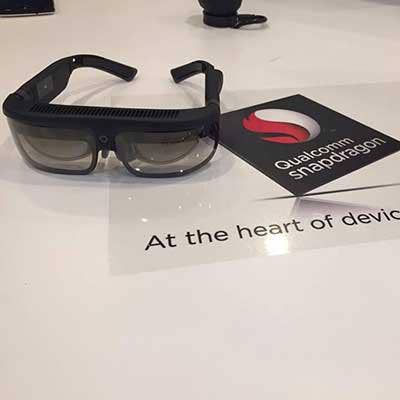
Osterhout Design Group R-8 Headset
As a preview of its newest processor, Qualcomm showed off ODG R-8 virtual and augmented reality smartglasses, the first Snapdragon 835-based headset.
The Android-powered headset, manufactured by San Francisco-based Osterhout Design Group, will cost less than $1,000 for the 720-pixel resolution version, and feature both virtual reality and augmented reality applications. The company is also offering a higher-end, 1,080-pixel version, the R-9, which will cost $1,799. The R-8 will ship its first developer units in the second half of the year, while the R-9 will ship in the second quarter of this year.
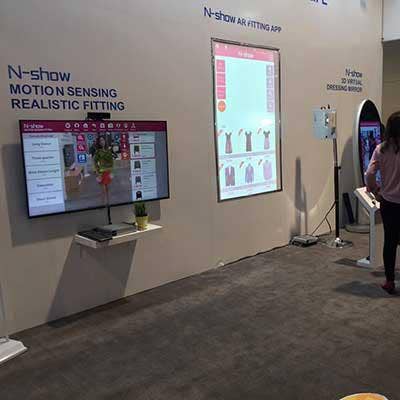
N-Show Virtual Fitting Room
Newtempo has brought its augmented reality technology to market with one vertical market in mind – the retail segment. The China-based company at CES showed off its virtual fitting room, called N-show, which features an AR Fitting App, allowing brands to highlight their products. The app features a free model tool that produces 3-D clothes easily and quickly so users can fit virtual clothes on themselves in augmented reality.
Several of Newtempo's virtual fitting rooms are already installed in department stores in China, according to the company.
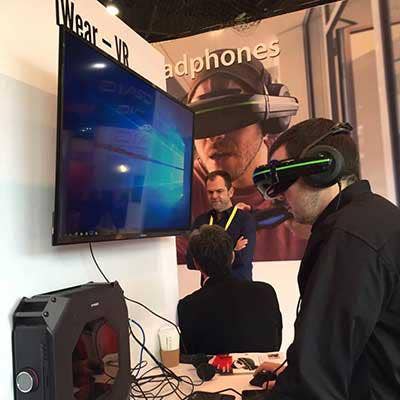
Vuzix iWear VR
In addition to the M3000, Vuzix showed off its other virtual reality headset – iWear - which can run without a PC or smartphone – at its CES booth.
This headset, which is powered by a customized version of Android, is $499 and has dual 720-pixel eye pieces.
Consumers using the iWear headphones can have a home theater experience, as the headset supports HDMI inputs compatible with the latest 2-D and 3-D modes. The headphones also include an integrated tracker that tracks head orientation and movement so that when the user's head moves, the image of the virtual world matches that motion in real time.